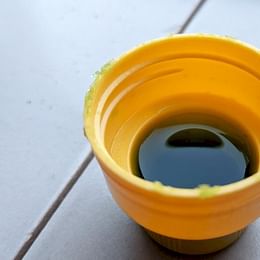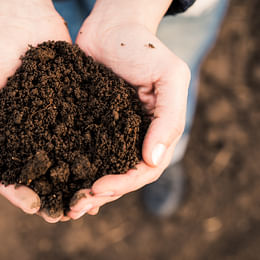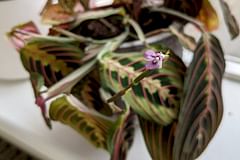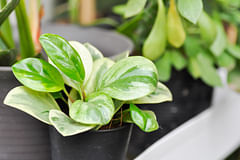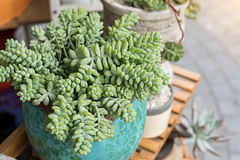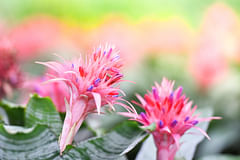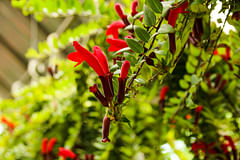How to care for an Areca Palm (Dypsis lutescens)
Learn the best way to care for an Areca Palm and keep it healthy and vibrant! Discover simple tips and techniques to take care of your Areca Palm. Get expert advice from this plant care guide. Dig into the secrets of Areca Palm care and unleash your green thumb. Let's help your Areca Palm thrive together!

The Dypsis lutescens, also known as the Areca Palm, is the most well-known palm that you can keep as a houseplant. Plant owners often confuse the Areca Palm with its smaller sibling the Parlor Palm. These two plants might look similar, but their plant care needs are a little different.
In this plant care guide, we're going to look at how we can take care of an Areca Palm. We'll look at everything your Areca Palm needs to be a happy plant and thrive in your house. These are the topics we're going to cover:
Let's dive right in and find out how to keep this big indoor palm happy and help it thrive!
Light requirements for Areca Palm
In the introduction, I mentioned that plant owners often confuse the Areca Palm and the Parlor Palm. They look the same but don't have the same plant care needs. Sunlight exposure is one of those differences.
The Areca Palm likes bright indirect sunlight and doesn't do too well in low-light situations or direct sunlight. If your Areca Palm doesn't get enough sunlight, its leaves will turn yellow and start to wrinkle. Ideally, they need around six to eight hours of bright, filtered sunlight to grow and remain healthy. However, they can tolerate slightly low light levels and still survive.
Low-light
One of the best things about Areca Palms is their adaptability to a range of light conditions. They can tolerate low light, but this may slow their growth and cause fewer leaves.
Direct sunlight
If your Areca palm is exposed to direct sunlight, it may develop brown tips on its leaves. These brown tips are called sunburns. The sunburns on your Areca Palm unfortunately don't return to their normal color. You can prune these leaves if you don't want to see the sunburns anymore.
So the Areca Palm prefers bright indirect sunlight, no low light or direct sunlight. Luckily, if it doesn't get the right amount of sunlight exposure, it will let you know.
Watering schedule
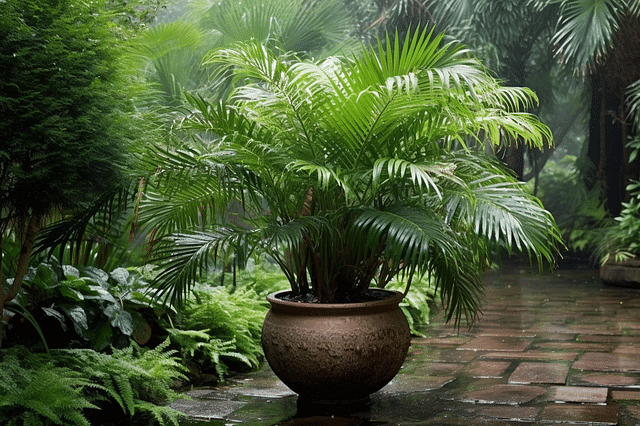
The Areca Palm is originally from Madagascar, a warm and tropical place. The fact that the Areca Palm is originally from a warm and tropical place tells us a little bit about its water needs. Areca Palms are gorgeous plants that require a certain amount of care to thrive. If you're wondering how often to water your Areca Palm, there are a few things to keep in mind.
First, it's important to note that overwatering is just as bad as underwatering. You'll want to find a balance that works for your specific plant and environment. Areca Palms prefer to be kept slightly moist but not waterlogged.
As a rule of thumb, you should water your plant when the top inch of soil feels dry to the touch. This typically means watering it once a week, but it may be more or less depending on temperature, humidity, and other factors in your house.
The best way to water an Areca Palm
When watering, it's best to give your plant a deep soak until water runs through the drainage holes. This ensures that the roots get plenty of moisture and nutrients. Don't let your plant sit in standing water, as this can lead to root rot and other issues. This is why drainage holes are so important.
Watering in the spring and summer
During the spring and summer, the Areca Palm is in its growing season and uses a lot of moisture and nutrients. The growing season will be the time of year you will water your palm the most.
Watering in the fall and winter
During the fall and winter, you should change your water schedule and water the Areca Palm less often. During this time of year, it's easy to overwater your Palm, so you should check if the soil is dry before watering your plant. If the soil is still moist when you check, wait a few days and check again. On average, you should water your Areca palm around once per week to once every 10 days in the fall and winter.
The best soil for an Areca Palm
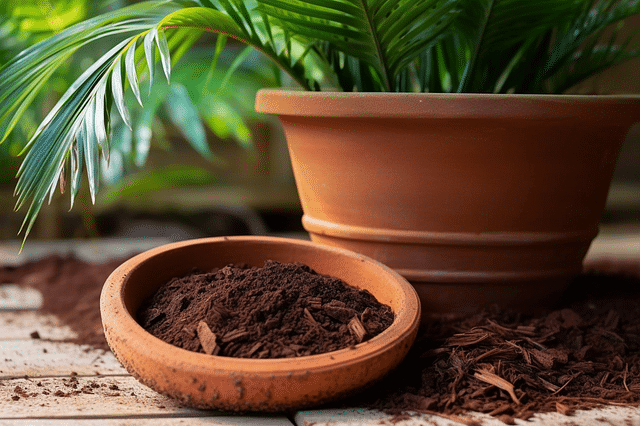
In the last section, we learned that the Areca Palm loves to be in moist soil most of the time. This means we'll need to find soil that can hold onto moisture for at least a few days. However, we also discovered that the Areca Palm is sensitive to overwatering.
An important thing to consider when choosing soil for an Areca Palm is how well it holds water. The soil should be able to hold moisture without becoming waterlogged because too much water can lead to root rot and other problems. To achieve this, you can add vermiculite or coir to the soil mixture.
Excellent drainage
Since the soil will be moist most of the time and if you were to use general potting soil for this plant you'll notice that the soil compacts quickly when you water your plant often. Compacting soil is something we need to avoid because this will prevent oxygen from reaching the palm's roots.
When the roots of your palm don't get any oxygen, root rot can start to show up. This plant doesn't store a lot of nutrients in its stems, so it probably won't survive root rot.
A great way to prevent this compacting from happening is to add things like perlite, peat moss, or pumice to your soil mixture. This will keep the soil light and fluffy.
The ideal soil mixture
The ideal soil can hold its shape, can hold moisture for a few days, but also drain excess water quickly. A well-draining potting mix that is rich in organic matter and slightly acidic would be great for helping your palm thrive.
If you don't want to bother creating your mix, you can also use commercial potting soil specifically designed for palms or a mixture of peat moss, perlite, and sand. This type of soil encourages good drainage, oxygenation, and nutrient absorption, which are essential for the healthy growth of the palm.
Lastly, it's worth noting that Areca Palms prefer slightly acidic soils, with a pH between 6.0 and 6.5. If the soil is too alkaline, you can use sphagnum peat moss or elemental sulfur to lower the pH level.
Fertilizing your Areca Palm

The Areca Palm is a popular houseplant that grows quite quickly during the growing season in the spring and summer. Using fertilizer for these fast-growing plants is essential to ensure that your Areca Palm grows strong and stays healthy. So when and how often should you fertilize your Areca Palm? Let's find out!
Fertilizing in the growing season
During the growing season, in spring and summer, your Areca Palm will need to be fertilized more often than during the dormant period, fall and winter. Typically, Areca Palms grow the quickest during the spring and summer months, which is when you'll want to fertilize them more often.
On average, you should fertilize your Areca Palm once per month during the spring and summer to keep it healthy.
Fertilizing in the fall and winter
During the fall and winter, you shouldn't fertilize your Areca palm as it won't need the extra nutrients to grow. The palm won't grow very much during this time of year and the extra nutrients of the fertilizer will stay behind in the soil.
Most fertilizers are made of salts, so these salts stay behind in the soil. Over time, this makes the soil too acidic and could harm your plant. As soon as spring starts, you can fertilize your palm again.
The best fertilizer for an Areca palm
Another thing to keep in mind is the type of fertilizer you use. These palms prefer a liquid fertilizer with a ratio of NPK 3-1-2 (nitrogen-phosphate-potassium). You should mix the fertilizer with water and apply it directly to the soil to provide the plant with the necessary nutrients.
Another option is to use a slow-release fertilizer, such as fertilizing sticks or balls, and feed your plant once at the beginning of spring and once at the beginning of the summer. It's recommended to always follow the instructions on the label when applying fertilizer.
Humidity & Temperature for an Areca Palm

The Areca Palm grows naturally in a tropical climate. You can help your palm thrive and be happy in your house, no matter what climate you live in. The ideal temperature range for these plants is between 18 to 24 degrees Celsius (65 to 75 F). However, they can tolerate temperatures as low as 13 C (55 F) and as high as 29 C (85 F) for short periods.
Keep the humidity high
Since your Areca Palm loves tropical climates, you can help it be happy by giving it a high-humidity environment. I've written a guide about raising the humidity in your house that you can use to provide the ideal environment for your palm.
Areca Palms are known to thrive in humid environments, which makes them a great addition to any tropical-inspired or humid areas in your home or garden. In terms of the ideal humidity level, aim for humidity levels between 50% to 60%. Anything beyond that can promote the growth of pests and fungi that can damage your plant.
To maintain the perfect humidity level, consider using a humidifier or placing a tray of water near your plant. Misting your Areca Palm's leaves regularly can also help boost humidity levels around the plant.
The Areca palm and cold drafts
It's important to note that Areca Palms are sensitive to cold drafts and sudden temperature changes, which can cause their leaves to yellow and drop, or develop brown spots all over. It's best to avoid placing them near doors or windows that are frequently opened and closed, air conditioning units, or heating vents.
Toxicity for pets

Areca Palms are popular household plants for their air-purifying abilities. However, pet owners may be concerned about their furry friends' safety around this plant.
Like other palms, the Areca Palm is not toxic to cats, dogs, or humans. If your pet ingests any part of the plant, it will be just fine. However, it's important to keep in mind that Areca Palms still have the potential to cause gastrointestinal upset in pets if they eat large amounts of it.
If your pet does ingest a large amount of the Areca Palm, it may show some mild symptoms such as vomiting, diarrhea, or loss of appetite. These symptoms should go away within a day or two as long as your pet stays hydrated and receives plenty of rest. However, if the symptoms are more severe or don't go away after a day or two, you should contact your veterinarian right away.
Conclusion
The Areca Palm is a big palm that's great as a houseplant. It's not the best plant for beginners, because it can be quite picky about the care you give it. However, you can still take care of it as a beginner, because it shows you when it's not happy and gives you a chance to improve.
It's a fast-growing plant, which is very exciting during the spring and summer. This plant will make any place in your house look like a tropical paradise!
Thank you for reading this post! I hope it helps you to keep your plants healthy and beautiful! If you're looking for more guides on specific plants, you can always request a plant guide to get a guide for the plant you have trouble with.
Test your plant care knowledge
Quiz completed!
Want to learn more? Sign up for my newsletter to receive free tips in your inbox!
Sign up now!
